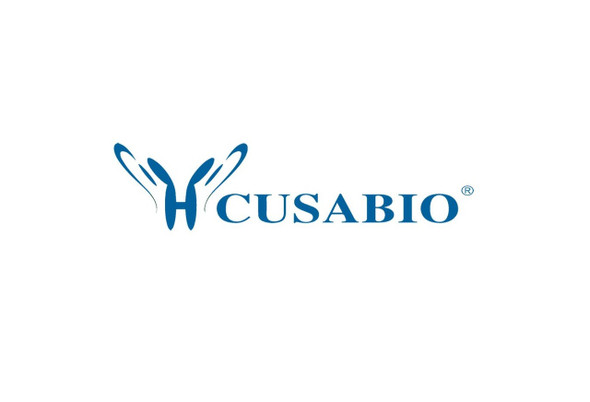Cusabio Human Recombinants
Recombinant Human Transmembrane protein 59 (TMEM59) | CSB-CF023860HU
- SKU:
- CSB-CF023860HU
- Availability:
- 18 - 23 Working Days
Description
Recombinant Human Transmembrane protein 59 (TMEM59) | CSB-CF023860HU | Cusabio
Alternative Name(s): Liver membrane-bound protein
Gene Names: TMEM59
Research Areas: Neuroscience
Organism: Homo sapiens (Human)
AA Sequence: AFDSVLGDTASCHRACQLTYPLHTYPKEEELYACQRGCRLFSICQFVDDGIDLNRTKLECESACTEAYSQSDEQYACHLGCQNQLPFAELRQEQLMSLMPKMHLLFPLTLVRSFWSDMMDSAQSFITSSWTFYLQADDGKIVIFQSKPEIQYAPHLEQEPTNLRESSLSKMSYLQMRNSQAHRNFLEDGESDGFLRCLSLNSGWILTTTLVLSVMVLLWICCATVATAVEQYVPSEKLSIYGDLEFMNEQKLNRYPASSLVVVRSKTEDHEEAGPLPTKVNLAHSEI
Source: in vitro E.coli expression system
Tag Info: C-terminal 10xHis-tagged
Expression Region: 37-323aa
Sequence Info: Full Length of Mature Protein
MW: 35.5 kDa
Purity: Greater than 90% as determined by SDS-PAGE.
Relevance: Acts as a regulator of autophagy in response to S.aureus infection by promoting activation of LC3 (MAP1LC3A, MAP1LC3B or MAP1LC3C). Acts by interacting with ATG16L1, leading to promote a functional complex between LC3 and ATG16L1 and promoting LC3 lipidation and subsequent activation of autophagy. Modulates the O-glycosylation and complex N-glycosylation steps occurring during the Golgi maturation of several proteins such as APP, BACE1, SEAP or PRNP. Inhibits APP transport to the cell surface and further shedding
Reference: "The T300A Crohn's disease risk polymorphism impairs function of the WD40 domain of ATG16L1." Boada-Romero E., Serramito-Gomez I., Sacristan M.P., Boone D.L., Xavier R.J., Pimentel-Muinos F.X. Nat. Commun. 7:11821-11821(2016)
Storage: The shelf life is related to many factors, storage state, buffer ingredients, storage temperature and the stability of the protein itself. Generally, the shelf life of liquid form is 6 months at -20?/-80?. The shelf life of lyophilized form is 12 months at -20?/-80?.
Notes: Repeated freezing and thawing is not recommended. Store working aliquots at 4? for up to one week.
Function: Acts as a regulator of autophagy in response to S.aureus infection by promoting activation of LC3 (MAP1LC3A, MAP1LC3B or MAP1LC3C). Acts by interacting with ATG16L1, leading to promote a functional complex between LC3 and ATG16L1 and promoting LC3 lipidation and subsequent activation of autophagy
Involvement in disease:
Subcellular Location: Late endosome membrane, Single-pass type I membrane protein, Lysosome membrane, Single-pass type I membrane protein, Cell membrane, Single-pass type I membrane protein, Golgi apparatus membrane, Single-pass type I membrane protein
Protein Families: TMEM59 family
Tissue Specificity:
Paythway:
Form: Liquid or Lyophilized powder
Buffer: If the delivery form is liquid, the default storage buffer is Tris/PBS-based buffer, 5%-50% glycerol. If the delivery form is lyophilized powder, the buffer before lyophilization is Tris/PBS-based buffer, 6% Trehalose, pH 8.0.
Reconstitution: We recommend that this vial be briefly centrifuged prior to opening to bring the contents to the bottom. Please reconstitute protein in deionized sterile water to a concentration of 0.1-1.0 mg/mL.We recommend to add 5-50% of glycerol (final concentration) and aliquot for long-term storage at -20?/-80?. Our default final concentration of glycerol is 50%. Customers could use it as reference.
Uniprot ID: Q9BXS4
HGNC Database Link: HGNC
UniGene Database Link: UniGene
KEGG Database Link: KEGG
STRING Database Link: STRING
OMIM Database Link: N/A









